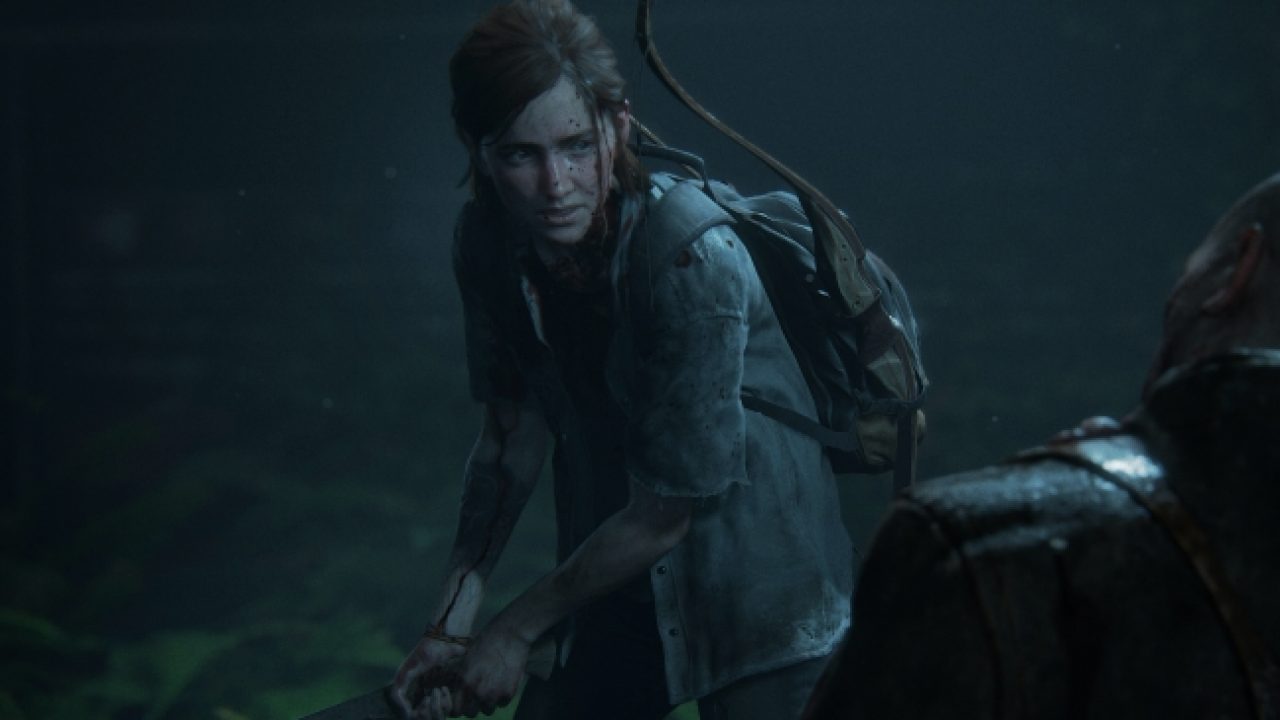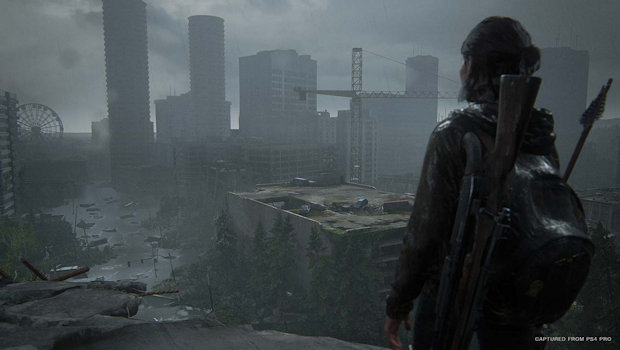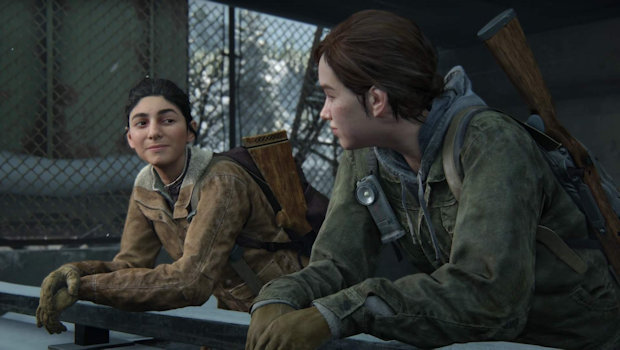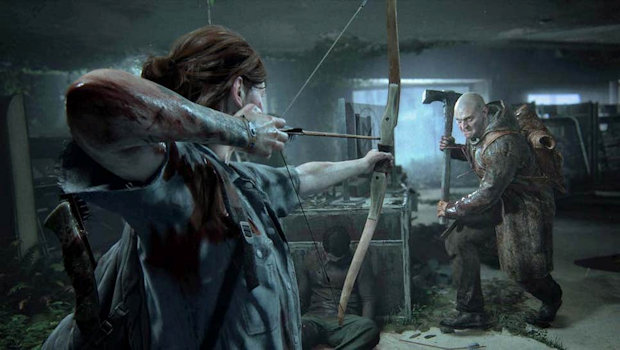Naughty Dog developed games have become event gaming and The Last of Us Part II is one of the biggest game releases of the year. Everyone that plays games probably has an opinion on it, regardless of if they played it or not. It is just that big a release that it brings out the good, the bad, the ugly, and the indifferent. All to participate in the discourse surrounding such a big title.
If you didn’t know, I did not love first The Last of Us but what I did like about it was that it told a story that worked very well as a self-contained narrative. We didn’t need another The Last of Us because the first was complete but, money talks. The success of The Last of Us dictated that we’d eventually get another game with these characters and here we are with The Last of Us Part II.
I enjoy Naughty Dog’s output but often have issues with certain aspects of their games. The biggest is that I feel they don’t control particularly well for what they are attempting to do. They are a little to floaty and imprecise for my tastes and in something like The Last of Us, which featured limited resources; this really left a bad taste in my mouth. Portions of the ending also diminished my appreciation of the game but I’ve come to terms with them and set my expectations accordingly for The Last of Us Part II.
So right off the bat, I want to say, The Last of Us Part II is the best playing Naughty Dog game to date. Not only does the shooting and movement feel more refined (enough that I feel it is acceptable and not distracting), but the sheer amount of adjustable options that have been implemented should be celebrated. What Naughty Dog has put in place for accessibility should be regarded as the gold standard and what all developers should strive for.
The Last of Us Part II is a joy to play but that is a major problem.
You are all saying WTF right now aren’t you?
I get it, saying a video game is fun to play shouldn’t be a problem but the thing with Naughty Dog is that you can’t uncouple the gameplay from the narrative. And the narrative in The Last of Us Part II is very clearly attempting to make a statement about violence, its cycles, and how nothing good comes from participating in the cycle. Except, playing The Last of Us Part II is fun and killing people and (monsters) in the game is quite satisfying. Also, like other games before it that have tried to make this point, the only option given to the player is to not participate in the cycle by turning off the game and walking away from it. That’s a pretty shitty choice for something they asked me to pay $60 to experience.
In any case, to discuss this properly we need to dive in to the story. So, warning, if you haven’t played The Last of Us Part II you might want to turn away here.
The Last of Us Part II picks up after the events of the first one. Four years after Ellie’s rescue, both Ellie and Joel have made a life for themselves in Jackson. It’s clear early on that Ellie and Joel aren’t on the best of terms but that despite this, they both care deeply for one another. A lot of this animosity between the two circles back to the ending of the first game and we’re granted small glimpses at key moments in their relationship over the past few years and why they are currently not the father/surrogate daughter tandem we got from the first game.
Turns out there are some people looking for Joel in relation to his rescue of Ellie. And this is where we are introduced to the co-lead of this game, Abby. The game early on lets you know that this isn’t just going to be an Ellie/Joel adventure as you’ll take control of Abby a few times in what I’d classify as the prologue.
Really, if you haven’t played the game now is the last time to turn away.
Abby kills Joel and she does it directly in front of Ellie. We know it is a revenge killing for the events at the Firefly hospital at the end of the first game but we’re not given real context for it just yet. Abby and her crew leave Ellie and Joel’s brother Tommy alive which of course sets us on our revenge quest to kill Abby in Seattle.
Ellie and her girlfriend set out on Revenge Quest 2 and well… it’s kind of fun. We get some great character interactions and we see Ellie become more and more obsessed with carrying out her mission. She’s obviously struggling internally with her feelings of guilt towards her relationship with Joel and where they were when he was killed. And the fact that she can’t reconcile with him has made her more and more obsessive to the point of becoming a monster as she systematically hunts her prey. Through her own actions, she finally comes to terms with everything and realizes that maybe she has crossed a line (she had, at least one line prior that the game forces you to cross yourself) and this quest isn’t worth her humanity. And the game seems at an end but hey, remember how the game had you play as Abby at the beginning signaling that she wasn’t necessarily the primary antagonist. Well, the game isn’t over.
We shift focus and take control of Abby, who is given a sympathetic backstory and one that lays the foundation to understand why she killed Joel in the prologue. Abby’s father was the surgeon that was going to operate on Ellie, ultimately killing her, and that Joel shot to death during the rescue. The game tries to make Abby and her dad out to be sympathetic characters. Except, they are both assholes. Abby’s father is set on the surgery being the correct thing to do; it may (key word) hold the key to saving humanity from this horrid plague. And Abby reassures him that he is making the right call and if it were her, she’d want him to do it. None of this though takes in to account what Ellie wants.
Ellie’s understanding of the circumstances is never shown but from how the game presents it, she did not regain consciousness after her near drowning. In the original game, there is a conversation between Joel and Ellie as they enter Salt Lake City where Joel says they don’t need to go to the Firefly’s they can just go back to Jackson and live their lives. Ellie responds that she doesn’t want everything that had happened to be for nothing, which can be interpreted multiple ways, one being that she knew this was a one way trip and she was giving consent. However, the Firefly’s don’t give her this information and they try to push Joel out the door without being able to say goodbye, which to me seems super shady. Abby’s dad as doctor should have at least sat down and had a conversation with his patient (lab rat) about what was going to happen but he didn’t, he’s an asshole. And Abby, giving her father assurances that she’d want him to kill her if it meant saving humanity is giving consent for him to kill another without laying the risks out. Fuck them both.
Look, I get Abby’s wish for revenge. It’s understandable but she was still an asshole. And that is a major issue I have with the rest of the game. Abby is an asshole (or as an ex-friend, and pregnant mother of her best friend’s future kid called her, a piece of shit) for more than just my reasons above. But the game’s second act is entirely played from her perspective. And you know what? There is a better, and more interesting, story in her portion of the game than there is Ellie’s but it’s so disjointed that I don’t feel it works on all levels.
Abby and her pals are part of the Washington Liberation Front (wolves) and they are about to lead an assault on a group of cultists that have been causing havoc in Seattle. Abby’s best friend though is AWOL and a suspected murderer, which means that of course Abby will also go AWOL (but secretly) and go look for him. And when she finds him, she’s going to fuck him too even though he is with someone else that happens to be carrying his baby. To be fair, the last point is experienced in a moment where some tension likely needed to be released by both parties but still… shitty. Anyway, Abby has a redemption arc with a pair of the cultists, a brother/sister pair that are quite likeable. Through them we learn about the awful practices of both the WLF and the Seraphites. Both are equally shitty and doing things for the wrong purposes that result in a never ending cycle of violence between the two factions. This is also comparable to Abby and Ellie on a broader story scale.
Personally I would have preferred Abby’s story (minus the inclusion of Ellie/Joel’s participation) by itself. After playing 12 hours as Ellie on this relentless quest for revenge, I was tired. As I said, the game was fun. Combat was enjoyable, encounters were well put together, and the small open world, puzzle solving, and platforming bits are excellent. Killing things in the game was satisfying and a bit counter to the character progression that Ellie was going through but whatever. But then having another 8 or so hours to play as Abby was a bit much. Still fun, still well designed and put together (including some amazing set pieces) but just overkill for me. And then when you are done as Abby, the game still isn’t over. There is another 2-3 hours of playtime as Ellie again. It just drags and at the end I didn’t care anymore, I just wanted it to be over.
I feel this write up is maybe more negative than it should be because ultimately I liked The Last of Us Part II. And I came away thinking The Last of Us Part II is worse in the narrative than its predecessor but the improvements in its gameplay and the amazing accessibility options give it the edge as a game. I just wish that it had been tightened up a bit more so that both the game and narrative tied better for me. But considering the subject matter and the gameplay direction they chose to go, I suppose it couldn’t have been. 4*



